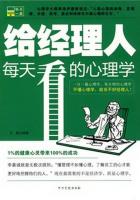From the single plough it was only a step to two or more ploughs fastened together, doing more work with approximately the same man power.The sulky plough, on which the ploughman rode, made his work easier, and gave him great control.Such ploughs were certainly in use as early as 1844, perhaps earlier.The next step forward was to substitute for horses a traction engine.Today one may see on thousands of farms a tractor pulling six, eight, ten, or more ploughs, doing the work better than it could be done by an individual ploughman.On the "Bonanza" farms of the West a fifty horsepower engine draws sixteen ploughs, followed by harrows and a grain drill, and performs the three operations of ploughing, harrowing, and planting at the same time and covers fifty acres or more in a day.
The basic ideas in drills for small grains were successfully developed in Great Britain, and many British drills were sold in the United States before one was manufactured here.American manufacture of these drills began about 1840.Planters for corn came somewhat later.Machines to plant wheat successfully were unsuited to corn, which must be planted less profusely than wheat.
The American pioneers had only a sickle or a scythe with which to cut their grain.The addition to the scythe of wooden fingers, against which the grain might lie until the end of the swing, was a natural step, and seems to have been taken quite independently in several places, perhaps as early as 1803.Grain cradles are still used in hilly regions and in those parts of the country where little grain is grown.
The first attempts to build a machine to cut grain were made in England and Scotland, several of them in the eighteenth century;and in 1822 Henry Ogle, a schoolmaster in Rennington, made a mechanical reaper, but the opposition of the laborers of the vicinity, who feared loss of employment, prevented further development.In 1826, Patrick Bell, a young Scotch student, afterward a Presbyterian minister, who had been moved by the fatigue of the harvesters upon his father's farm in Argyllshire, made an attempt to lighten their labor.His reaper was pushed by horses; a reel brought the grain against blades which opened and closed like scissors, and a traveling canvas apron deposited the grain at one side.The inventor received a prize from the Highland and Agricultural Society of Edinburgh, and pictures and full descriptions of his invention were published.Several models of this reaper were built in Great Britain, and it is said that four came to the United States; however this may be, Bell's machine was never generally adopted.
Soon afterward three men patented reapers in the United States:
William Manning, Plainfield, New Jersey, 1831; Obed Hussey, Cincinnati, Ohio, 1833; and Cyrus Hall McCormick, Staunton, Virginia, 1834.Just how much they owed to Patrick Bell cannot be known, but it is probable that all had heard of his design if they had not seen his drawings or the machine itself.The first of these inventors, Manning of New Jersey, drops out of the story, for it is not known whether he ever made a machine other than his model.More persistent was Obed Hussey of Cincinnati, who soon moved to Baltimore to fight out the issue with McCormick.Hussey was an excellent mechanic.He patented several improvements to his machine and received high praise for the efficiency of the work.But he was soon outstripped in the race because he was weak in the essential qualities which made McCormick the greatest figure in the world of agricultural machinery.McCormick was more than a mechanic; he was a man of vision; and he had the enthusiasm of a crusader and superb genius for business organization and advertisement.His story has been told in another volume of this series.** "The Age of Big Business", by Burton J.Hendrick.
Though McCormick offered reapers for sale in 1834, he seems to have sold none in that year, nor any for six years afterwards.He sold two in 1840, seven in 1842, fifty in 1844.The machine was not really adapted to the hills of the Valley of Virginia, and farmers hesitated to buy a contrivance which needed the attention of a skilled mechanic.McCormick made a trip through the Middle West.In the rolling prairies, mile after mile of rich soil without a tree or a stone, he saw his future dominion.Hussey had moved East.McCormick did the opposite; he moved West, to Chicago, in 1847.
Chicago was then a town of hardly ten thousand, but McCormick foresaw its future, built a factory there, and manufactured five hundred machines for the harvest of 1848.From this time he went on from triumph to triumph.He formulated an elaborate business system.His machines were to be sold at a fixed price, payable in installments if desired, with a guarantee of satisfaction.He set up a system of agencies to give instruction or to supply spare parts.Advertising, chiefly by exhibitions and contests at fairs and other public gatherings, was another item of his programme.
All would have failed, of course, if he had not built good machines, but he did build good machines, and was not daunted by the Government's refusal in 1848 to renew his original patent.He decided to make profits as a manufacturer rather than accept royalties as an inventor.
McCormick had many competitors, and some of them were in the field with improved devices ahead of him, but he always held his own, either by buying up the patent for a real improvement, or else by requiring his staff to invent something to do the same work.Numerous new devices to improve the harvester were patented, but the most important was an automatic attachment to bind the sheaves with wire.This was patented in 1872, and McCormick soon made it his own.The harvester seemed complete.
One man drove the team, and the machine cut the grain, bound it in sheaves, and deposited them upon the ground.















